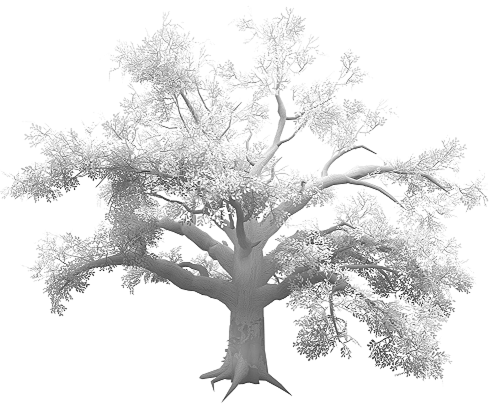Ambient lighting
Ambient light is light that exists in the scene but doesn't come directly from the sun/light source. It's light from the environment around the subject. Without any ambient light, shadows are completely black.
Color/intensity
The color and intensity of the ambient light can be adjusted in the Light Properties when the light is selected. Lighting presets are also available to quickly switch between lighting scenarios.
Ambient light uses three colors to set up the environment: sky, horizon, and ground. These colors are interpolated to form the sky and ground in the background of the Tree Window.
HDRI
In addition to setting up the lighting environment with 3 colors, you can also import an image that contains the environment. High dynamic range images (HDRI) are sphereically mapped, floating-point images of an environment, and they are a common way of supplying this information for use in rendering. They often allow for much more interesting lighting in controlled situations. HDRIs may already include the sun in outdoor scenes, so you can often turn down directional lighting (or use both).
The Modeler can load an HDRI image (in hdr or exr format) for use in lighting the tree in the Light Properties, and for supplying the background of the Tree Window.
The image below shows the same tree lit with 3-color ambient, HDRI ambient, and HDRI ambient with the image also used for the background.

Ambient occlusion
Ambient light comes from all directions at once. But similar to how directional light can cast shadows, parts of the tree should be shadowed from ambient light. This technique is referred to as ambient occlusion (AO).

AO darkens crevices and the interior of a tree, giving it much more realistic lighting. You can also use an ambient occlusion map to further refine AO on a per-material basis.
Calculating AO is fairly quick, but it's not something that can be done all the time. You can compute it by selecting Ambient Occlusion:Render in the Light Properties, selecting Tools > Render ambient occlusion, or by hitting 'O' in the Tree Window. Editing the geometry of a tree will invalidate AO until the next calculation, though AO is computed when the tree is first loaded.
With default settings, AO will most likely do a good job. However, you can further refine the effects of AO by modifying the Brightness, Contrast, Min, and Max properties. Generally, you want the very outside parts of the tree to be fully white. The interior of the tree should be dark but not black. The depth of the dark interior is up to the artist, depending on how dense and enclosed the tree is.
Note
Switch to the AO render mode to visualize the computed AO on the tree for easy editing.